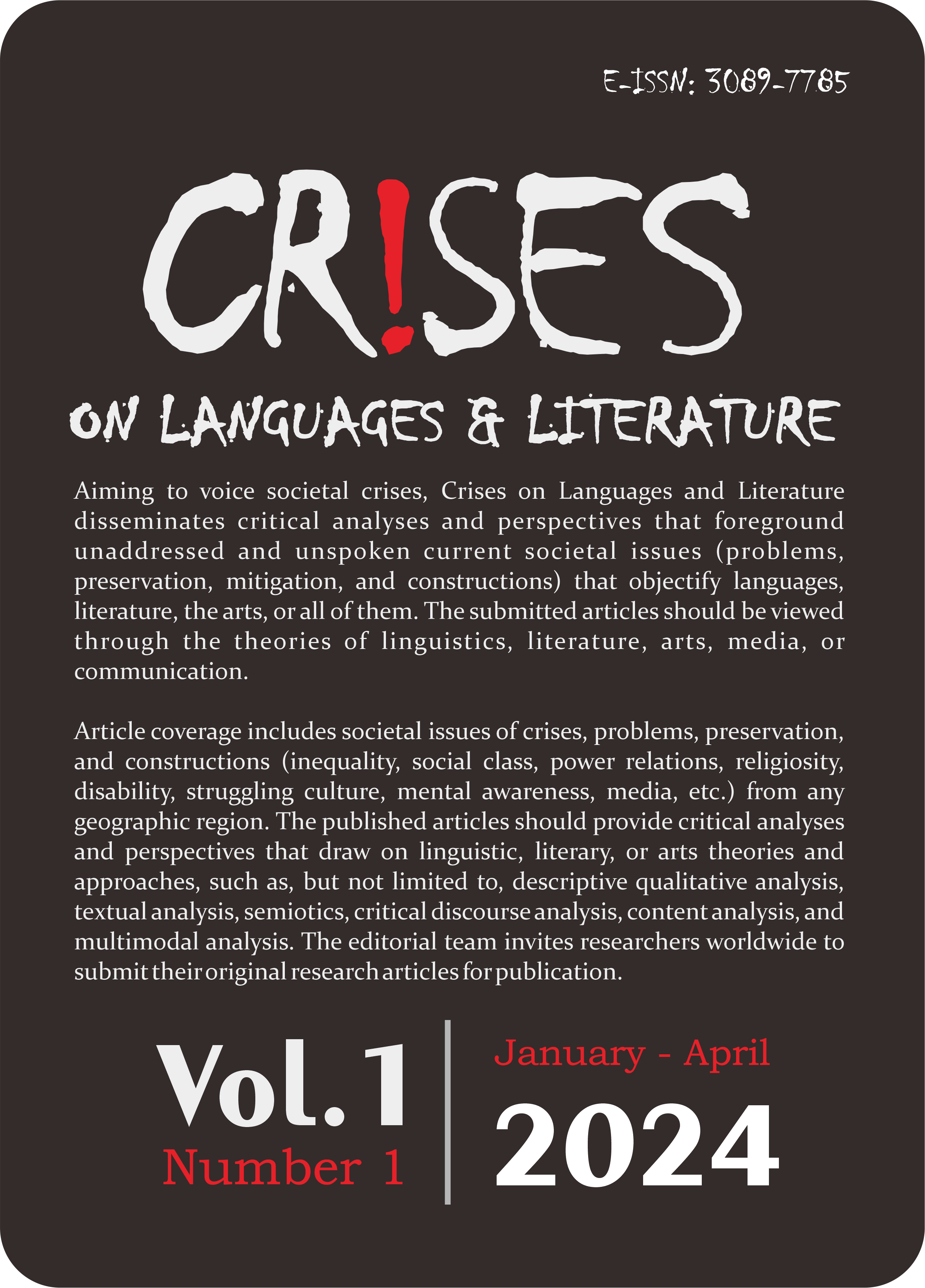Published 2024-04-30
Keywords
- logic representation,
- logic and language,
- syntax,
- language of thought,
- language and mind
How to Cite
Copyright (c) 2024 Adwidya Yoga

This work is licensed under a Creative Commons Attribution 4.0 International License.
Abstract
This research was based on the author's concern when he saw that postgraduate student, especially linguistics programs, did not use standard language varieties when corresponding via email. The variety of language used tends to be non-formal and like written spoken language. Departing from this situation, through this research the author aims to trace the syntactic errors in language of postgraduate linguistics program students and identify representations of logical thinking based on this language behavior. This research was studied qualitatively by analyzing data in the form of sentences collected from the contents of email messages from graduate students in linguistics programs. A total of fifteen data were analyzed and various syntactic errors were found which included errors in sentence structure, word use, punctuation use, phrase use and clause use. Word errors rank at the top in this research. The results of this research have implications for the evaluation of the learning process and language learning in higher education in particular, so that students are more sensitive to simple syntactic elements so that simple syntactic errors can be avoided.
References
- Chaer, A. (1994). Linguistik umum (Cet. 1). Rineka Cipta.
- Fodor, J. A. (1975). The Language of Thought. Harvard University Press.
- Gordon, M., & Ladefoged, P. (2001). Phonation types: A cross-linguistic overview. Journal of Phonetics, 29(4), 383–406. https://doi.org/10.1006/jpho.2001.0147
- Hasil Pencarian—KBBI VI Daring. (n.d.). Retrieved December 10, 2023, from https://kbbi.kemdikbud.go.id/entri/sarjana
- Katz, M. (n.d.). Language of Thought Hypothesis | Internet Encyclopedia of Philosophy. Retrieved December 8, 2023, from https://iep.utm.edu/lot-hypo/
- Kridalaksana, H. (2013). Kamus Linguistik (Edisi Keempat). Gramedia Pustaka Utama.
- Mariyana, S. (2019). Analisis Kesalahan Kalimat dalam Artikel Jurnal Pendidikan dan Keguruan 2014 Program Pascasarjana Universitas Terbuka. Metafora: Jurnal Pembelajaran Bahasa Dan Sastra, 5(2). http://dx.doi.org/10.30595/mtf.v5i2.5079
- Moeliono, A. M., Lapoliwa, H., Alwi, H., Tjatur, S. S., Sasangka, W., & Sugiyono, S. (2017). Tata bahasa baku bahasa Indonesia. Edisi keempat. Badan Pengembangan dan Pembinaan Bahasa, Kementrian Pendidikan dan Kebudayaan. https://repositori.kemdikbud.go.id/16351/
- Pambudi, T. R. (2018). Analisis Kesalahan Kalimat pada Teks Laporan Hasil Observasi Siswa Kelas Vii Smp Negeri 1 Sumpiuh Kabupaten Banyumas. Pend. Bahasa Dan Sastra Indonesia - S1, 7(5), Article 5.
- Ramlan, M. ; (1981). Ilmu Bahasa Indonesia: Sintaksis (Yogyakarta). C.V. Karyono. //perpustakaanbalaibahasadiy.kemdikbud.go.id%2Findex.php%3Fp%3Dshow_detail%26id%3D15017%26keywords%3D
- Rescorla, M. (2023). The Language of Thought Hypothesis. In E. N. Zalta & U. Nodelman (Eds.), The Stanford Encyclopedia of Philosophy (Winter 2023). Metaphysics Research Lab, Stanford University. https://plato.stanford.edu/entries/language-thought/
- Turing, A. M. (1950). Computing Machinery and Intelligence. Mind, New Series, 59(236), 433–460.
- Utami, N. F. T., Utomo, A. P. Y., Buono, S. A., & Sabrina, N. I. (2022). Analisis Kesalahan Sintaksis pada Cerpen Berjudul “Warisan untuk Doni” Karya Putu Ayub. Jurnal Riset Rumpun Ilmu Bahasa, 1(1), Article 1. https://doi.org/10.55606/jurribah.v1i1.120
- Warsiman, W. (2011). Keterkaitan Bahasa dan Logika dalam Berpikir Kritis. Prosodi, 5(1), Article 1. https://doi.org/10.21107/prosodi.v5i1.77
- Widhiarso, W. (2009). The Influence of Language on Thought Study Benjamin Whorf Hypothesis and Edward Sapir. https://papers.ssrn.com/abstract=1496642
- Wirahyuni, K., & Juliantari, N. K. (2019). Logika dalam Berbahasa Indonesia (Suatu Tinjauan Filsafat Bahasa). Lampuhyang, 10(1), Article 1. https://doi.org/10.47730/jurnallampuhyang.v10i1.175

